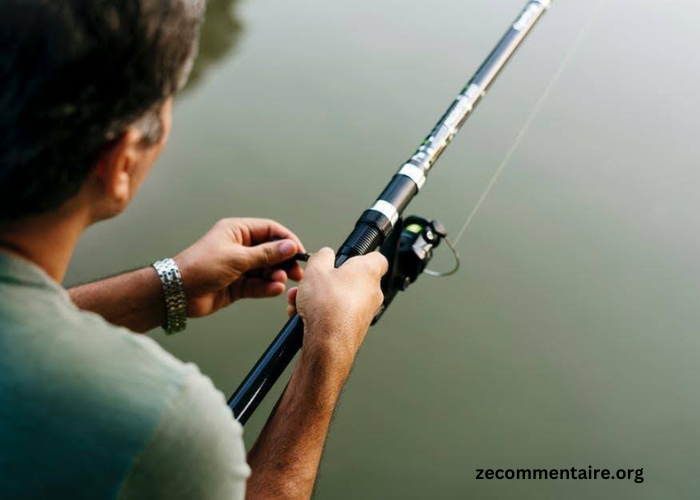Fly fishing is more than a pastime; it’s an art form that connects the angler with nature’s untamed beauty. Whether you’re casting in serene rivers or battling the mighty waves of the ocean, having the right fly fishing rod is crucial.
This guide will help you choose the best fly fishing rod for your adventure, from tranquil rivers to the vast expanses of the ocean. Read on.
Why the Right Fly Fishing Rod Matters
Selecting the correct fly fishing rod can significantly impact your fishing experience. It’s not just about catching fish; it’s about how you feel while doing it. The right rod enhances your casting technique, improves accuracy, and makes reeling in that big catch easier.
Understanding Fly Fishing Basics
Before we dive into specific destinations, let’s cover some fundamental aspects of fly rods. This will help you make an informed decision when selecting your gear.
Fly Rod Weight
Fly rod weight is crucial. It determines the type of fish you can target and the kind of water you can fish in. Rods range from 1-weight (ultra-light) to 14-weight (heavy-duty). For example, a 3-weight rod is perfect for small streams, while a 9-weight rod is ideal for saltwater fishing.
Fly Rod Length
Fly rods come in various lengths, typically between seven and ten feet. Shorter rods offer better control in tight spaces, whereas longer rods excel in open waters where longer casts are needed.
Fly Rod Action
Fly rod action refers to how much the rod bends during casting. There are three main types:
Slow Action
It bends throughout the entire length. This is ideal for delicate presentations.
Medium Action
It flexes in the middle. This provides a balance between power and finesse.
Fast Action
It bends mostly at the tip. It is perfect for long casts and windy conditions.
Choosing a Fly Fishing Rod for Rivers
Rivers offer a peaceful setting with diverse fish species. Here’s what you need to consider when choosing a rod for fly fishing for beginners.
Small Streams and Creeks
For small streams and creeks, a 2-4 weight rod between 7-8 feet is ideal. These rods provide the finesse needed for delicate presentations and are perfect for targeting smaller fish like brook trout.
Medium-Sized Rivers
In medium-sized rivers, a 5-6 weight rod between 8-9 feet works best. These rods offer a balance of power and precision, suitable for catching larger trout and bass.
Large Rivers
Large rivers require a bit more muscle. A 7-8 weight rod around 9 feet is perfect for handling bigger fish like salmon and steelhead. These rods can handle heavier flies and stronger currents efficiently.
Selecting a Fly Fishing Rod for Lakes
Lakes present unique challenges and opportunities for fly fishing enthusiasts. Here’s how to choose the right rod.
Stillwater Fishing
For Stillwater fishing, where you cast from the shore or a boat, a 5-6 weight rod around 9 feet is preferable. These rods provide the distance and accuracy needed to reach fish in deeper waters.
Consulting an expert can aid in getting the right fly rod. They can also provide tips on The Best Places to Fly-Fish.
Float Tubing
When float tubing, consider a 6-7 weight rod between 9-10 feet. The extra length helps keep your line above water, making casting and line control easier.
Targeting Specific Species
If you’re targeting specific species like pike or musky, opt for an 8 to 9 weight rod. These rods handle bigger flies and provide the backbone needed to fight fierce fish.
Picking a Fly Fishing Rod for Oceans
Saltwater fly fishing is an exhilarating experience, but it demands specialized equipment. Here’s what you need to know.
Inshore Fishing
For inshore fishing, where you target species like redfish and snook, a 7-9 weight rod around 9 feet is ideal. These rods offer the power needed for longer casts and handling larger fish.
Offshore Fishing
Offshore fishing requires robust gear. A 10-12 weight rod, around 9 feet, is perfect for targeting big game fish like tarpon and tuna. These rods can handle strong currents and powerful fish.
Surf Fishing
If you’re fishing from the surf, consider a 9-10 weight rod around 9-10 feet. The extra length helps manage the waves, and the heavier weight ensures you can cast into the surf and handle larger fish.
Balancing Versatility and Specialty
Your choice of fly fishing rod should balance versatility and specialization. If you fish in various environments, consider a medium-action rod around 5-6 weight and 9 feet long. This rod offers flexibility for different conditions and species.
Materials Matter Choosing the Right Rod Construction
The material of your fly rod significantly impacts its performance. Here are the most common materials used in fly rod construction.
Graphite Rods
Graphite rods are popular due to their light weight, sensitivity, and strength. They are versatile and suitable for various fishing conditions.
Fiberglass Rods
Fiberglass rods are known for their durability and slower action. They are excellent for small streams and delicate presentations.
Bamboo Rods
Bamboo rods offer a traditional feel and smooth action. They are usually more expensive and require careful maintenance but provide a unique fishing experience.
Maintenance Tips for Your Fly Fishing Rod
To ensure your fly fishing rod lasts, proper maintenance is essential. Here are some tips to keep your rod in top condition.
Cleaning Your Rod
After each fishing trip, rinse your rod with fresh water to remove dirt and debris. Use a soft cloth to dry it thoroughly.
Storing Your Rod
Store your rod in a cool, dry place. Use a rod tube or sock to protect it from damage.
Checking for Damage
Regularly inspect your rod for any signs of damage, such as cracks or loose guides. Address any issues promptly to avoid further damage.
Cost Considerations and Budgeting
Fly fishing rods come in a wide range of prices. It’s essential to find a rod that fits your budget while meeting your needs.
Entry-Level Rods
Entry-level rods are budget-friendly and suitable for beginners. Expect to spend between $50 to $150 for a decent rod.
Mid-Range Rods
Mid-range rods offer better performance and materials. These rods typically cost between $150 to $400.
High-End Rods
High-end rods are made from premium materials and offer top-notch performance. Prices for these rods can range from $400 to $1000 or more.
Get the Best Fly Fishing Rod Today
Choosing the best fly fishing rod for your destination is crucial for an enjoyable and successful fishing experience. By understanding the basics of fly rods, considering the specific requirements of different fishing environments, and prioritizing sustainability, you can make an informed decision that enhances your time on the water. Happy fishing!
If you want to read more articles, visit our blog.





